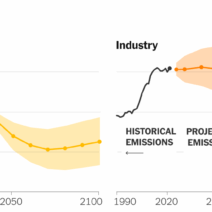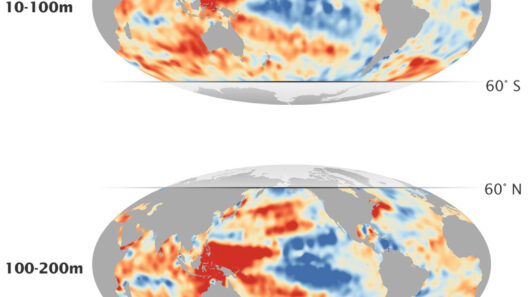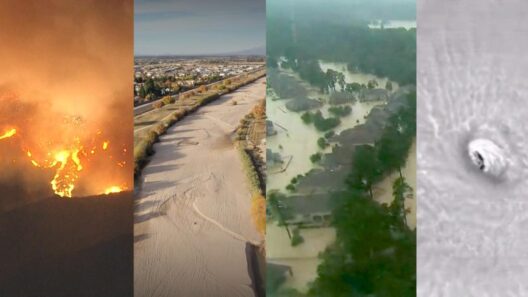Global warming, an insidious specter looming on the horizon, is far more alarming than most people realize. It manifests not merely in higher temperatures but in an intricate web of consequences that ripple across various ecosystems, economies, and human lives. This phenomenon can be likened to a slow-motion cataclysm, where the delicate balance of our planet teeters precariously on the edge of obliteration.
For centuries, the earth has been a meticulously orchestrated symphony. Each instrument, from the smallest microbe to the mightiest glacier, plays a critical role in maintaining harmony. Yet, as greenhouse gas emissions accelerate, this symphonic masterpiece begins to falter. The very notes that defined the weather patterns, agricultural cycles, and seasonal rhythms of life are becoming indistinguishable. The climate is no longer a predictable ally but a tempestuous adversary.
One of the most evident manifestations of global warming is the unabated rise in global temperatures. Since the mid-20th century, the planet’s average temperature has risen substantially. This phenomenon does not merely affect the thermometer readings; it engenders catastrophic weather events. The increased frequency and intensity of hurricanes, droughts, and heatwaves are harbingers of a climate crisis. These events do not occur in isolation; instead, they act like dominoes, triggering subsequent disasters that challenge the resilience of communities.
The oceans, which cover more than 70% of the Earth’s surface, are becoming the unlikely ground zero for climate change. As temperatures rise, the waters warm, leading to coral bleaching and the death of marine ecosystems. The vibrant undersea gardens, teeming with life, struggle to survive in an environment that grows increasingly inhospitable. Additionally, warmer waters contribute to rising sea levels, which threaten coastal cities and island nations. This displacement of populations will usher in a new era of climate refugees—people forced to abandon their homes, culture, and livelihoods in search of safety and stability.
As the earth’s temperatures continue to rise, the effects on agriculture can no longer be understated. Crops that once thrived in specific climates now languish under the strain of excessive heat and unpredictable rainfall. Our food systems are intricately linked to the climatic conditions that govern them. A significant disruption in growing seasons, coupled with increasing pest populations bolstered by the warmer climate, jeopardizes food security. It is as if the earth has become an errant gardener, pulling weeds while neglecting the flowers.
Moreover, the delicate symbiosis between flora and fauna is irrevocably altered. Species that cannot adapt swiftly face the risk of extinction, exacerbating the biodiversity crisis. The juxtaposition of warming temperatures and shifting habitats creates an ecological disarray wherein many wildlife species struggle to forge new alliances. Some animals trek in search of cooler climates, while others are simply unable to migrate quickly enough. This upheaval reverberates throughout ecosystems, leading to unpredictable fallout affecting human populations reliant on wildlife for sustenance and livelihood.
One startling and voracious aspect of this warming world is the feedback loop that amplifies its trajectory. As polar ice caps melt, they expose darker ocean surfaces, which absorb more sunlight and exacerbate warming. This cycle feeds upon itself, hastening climate change’s acceleration. The thawing permafrost in the Arctic, once considered a geological immutability, is releasing vast quantities of methane—a greenhouse gas far more potent than carbon dioxide—into the atmosphere. It is akin to opening Pandora’s box; the consequences are profound and chilling.
Global warming also imposes significant health risks on human populations. As climates become more erratic, the spread of infectious diseases proliferates under warm, stagnant conditions. The rise in respiratory ailments linked to poor air quality intensifies, while allergens flourish in more hospitable climates, affecting millions globally. It is imperative to consider that while climate change is a global issue, its impacts are not uniformly distributed. Vulnerable communities, often marginalized and impoverished, find themselves disproportionately affected by these multifaceted challenges.
In our quest for economic progress, fossil fuel dependency has been a relentless adversary to sustainable growth. Transitioning towards renewable energy sources stands as a necessity rather than a choice. Solar, wind, and hydropower offer luminous beacons of hope. They shed light on a path forward, where ecological integrity and economic viability coexist in a balanced paradigm. The shift towards these sustainable methods is not just urgent; it is crucial for preserving our planet’s ecological heritage.
There is a profound urgency to educate ourselves and others about the ramifications of global warming. Awaking to the harsh realities of climate change not only empowers us but fortifies the collective will to confront these challenges. An informed populace can drive legislative changes, influence corporate practices, and inspire grassroots movements aimed at fostering ecological stewardship.
In conclusion, global warming is not merely an environmental concern but a clarion call for humanity. The intricate tapestry of life on Earth is unraveling, replaced by threads of uncertainty. If we are to preserve the symphony of our planet, immediate and concerted action is paramount. We find ourselves at a pivotal juncture; the choice is ours—will we respond with circumspection and resolve or continue to quibble in the face of an escalating crisis? Let us not be the architects of our own demise but the custodians of a sustainable future.







